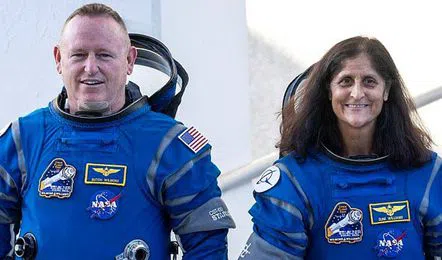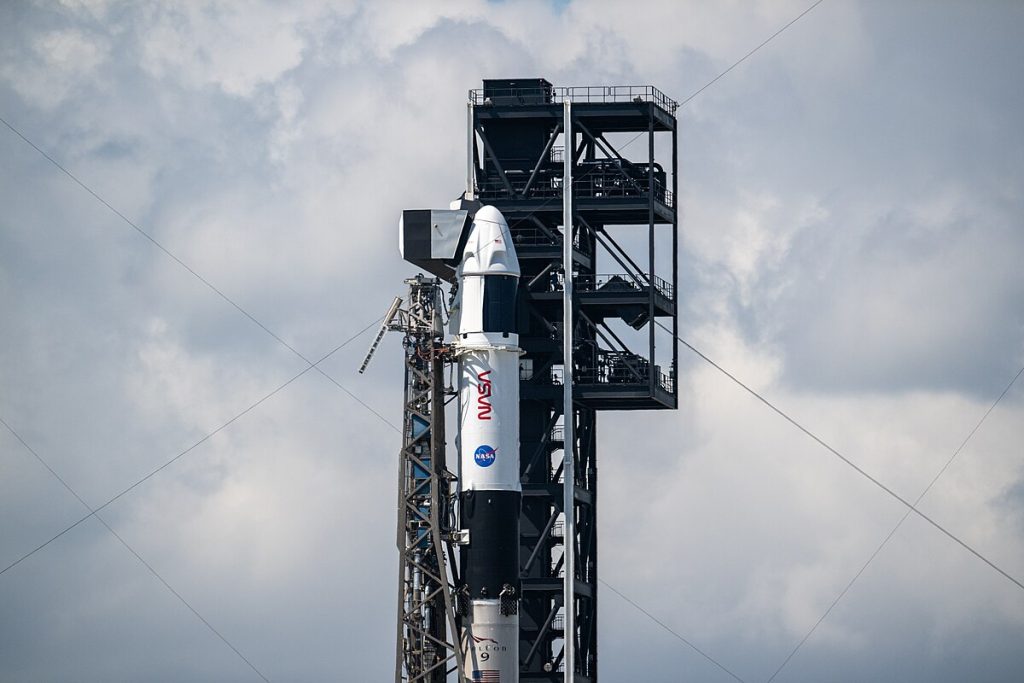On September 28, 2024, NASA has marked a significant milestone in space exploration by greenlighting the first astronaut launch to the International Space Station (ISS) from Cape Canaveral Space Force Station. The mission, known as Crew-9, will utilize a SpaceX Falcon 9 rocket to bring home Boeing Starliner astronauts Sunita Williams and Barry Wilmore, who have been stranded aboard the ISS due to technical issues with their spacecraft.
Launch Details
The Crew-9 mission is scheduled for launch at 1:17 PM EDT (10:47 PM IST), with the Falcon 9 rocket poised to carry two astronauts—NASA’s Nick Hague and Roscosmos cosmonaut Alexander Gorbunov—into orbit. This launch is notable for several reasons. It represents the first time SpaceX will send astronauts into space from the SLC-40 pad at Cape Canaveral, diverging from its traditional launch site at Kennedy Space Center’s Launch Complex 39-A.
The launch comes after a series of delays and adjustments, primarily due to complications surrounding the Boeing Starliner. The Starliner capsule, which was initially expected to safely return Williams and Wilmore after their June test flight, faced critical issues, including helium leaks and thruster malfunctions. Consequently, NASA opted for SpaceX’s services to facilitate a safe return for the stranded astronauts.
Background on the Starliner Issues
Boeing’s Starliner faced challenges during its June 5 test flight, which included unexpected helium leaks and thruster failures. Williams and Wilmore were anticipated to return to Earth shortly after the launch, but those plans changed when NASA decided to extend their stay on the ISS. As a result, the agency began exploring alternative options for their return, ultimately selecting SpaceX as a reliable means to bring the astronauts home.
The Crew-9 mission has thus evolved into a dual-purpose endeavor: not only will it transport Hague and Gorbunov to the ISS, but it will also facilitate the safe return of Williams and Wilmore, marking a critical collaboration between NASA and SpaceX amidst ongoing challenges in Boeing’s spacecraft development.
Preparations for Launch
In the lead-up to the launch, NASA officials have expressed confidence in the Crew-9 mission’s preparations. Steve Stich, the manager of NASA’s Commercial Crew Program, stated during a press briefing that they were on track for a successful launch, noting, “We’re proceeding toward launch and going to proceed at 1:17 p.m. tomorrow.” He highlighted that the rocket was vertical on the pad and preparations for cargo loading were underway.
Originally scheduled for launch on September 26, the mission faced postponements due to adverse weather conditions, including Hurricane Helene and nearby tornado warnings. The safety of the crew and equipment remains a top priority, prompting careful monitoring of environmental factors leading up to the launch.
A New Era of Space Travel
The Crew-9 mission signifies a new chapter in NASA’s commercial crew program. By leveraging the capabilities of private aerospace companies like SpaceX, NASA has enhanced its ability to transport astronauts to and from the ISS safely and efficiently. This partnership marks a shift from traditional space travel, where government agencies were solely responsible for manned missions.
The decision to utilize SpaceX for the Crew-9 mission underscores the growing reliance on commercial partnerships in the realm of space exploration. With its successful track record in launching cargo and astronauts, SpaceX has become a pivotal player in NASA’s mission to maintain a continuous human presence in space.
Looking Ahead

Following the Crew-9 mission, the timeline for the return of Williams and Wilmore to Earth is projected for February 2025. This timeline emphasizes the ongoing complexities involved in space travel, especially when dealing with multiple spacecraft and varying operational challenges. NASA’s commitment to ensuring the safety of its astronauts remains paramount, and the collaboration with SpaceX exemplifies the agency’s adaptability in the face of unforeseen issues.
Streaming the Launch
Space enthusiasts and the general public will have the opportunity to witness the Crew-9 launch live, as NASA plans to stream the event on YouTube. This accessibility reflects the increasing interest in space exploration and the growing community of individuals eager to engage with these historic missions. By broadcasting the launch, NASA aims to inspire the next generation of scientists, engineers, and explorers.
The Future of Commercial Space Travel
As NASA continues to expand its commercial partnerships, the Crew-9 mission serves as a testament to the potential of collaboration between government and private entities in advancing space exploration. The ongoing developments surrounding Boeing’s Starliner will also serve as valuable lessons for future missions, emphasizing the importance of rigorous testing and contingency planning.
In the coming years, as the space industry continues to evolve, missions like Crew-9 will lay the groundwork for more ambitious endeavors, including lunar exploration and potential missions to Mars. The success of commercial crew flights will be instrumental in shaping the future of human spaceflight, with NASA and its partners poised to lead the way.
Conclusion
The launch of SpaceX Crew-9 marks a critical juncture for NASA, SpaceX, and the future of manned space exploration. With the safe return of Boeing’s Starliner astronauts at the forefront of this mission, it underscores the necessity of adaptability in the face of challenges in the aerospace industry. As the Crew-9 mission prepares to take off, the eyes of the world will be on Cape Canaveral, eagerly awaiting another leap forward in humanity’s journey into the cosmos.

